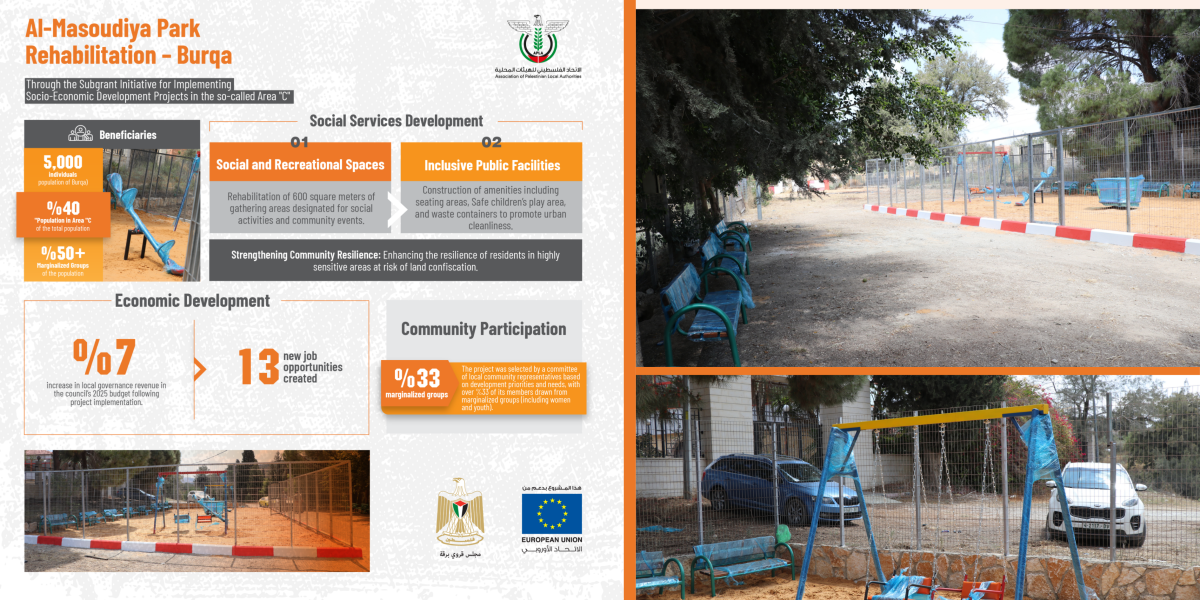Burqa | Al-Masoudiya Park Rehabilitation
More than a century has passed since the Hejaz Railway crossed this land, yet Al-Masoudiya in Burqa, north of Nablus, still guards its story among the hills. The Ottoman station remains standing, its stones preserved by century-old trees that stretch their shadows like arms that never falter, as if holding on to the echoes of pilgrims and travelers who once passed through. Today, the site still pulses with life: children running between the benches crafted by the villagers themselves, as if chasing the shadow of the passing train; families gathering in a quiet haven away from the city’s noise; visitors discovering in this modest corner an open park where nature and memory meet.
In Al-Masoudiya, time does not stop at the ruins—it flows into the details of daily life: laughter blending with the echoes of old pilgrims, footsteps tracing over the platform that still extends its memory to guard the fleeting joys people create in the present.
Yet this fragile joy is quickly shattered by reality. The occupation has turned Al-Masoudiya into a military zone, demolishing the facilities built by villagers, sealing the access roads with iron gates and concrete blocks, and emptying the site at gunpoint whenever it fills with life. Meanwhile, settlers are welcomed in, raising their flags and performing rituals in an open attempt to erase identity and strip the place of sovereignty. Al-Masoudiya thus stands as a symbol of an ongoing struggle over memory, history, and the very right to exist.
As the noose tightens around Al-Masoudiya, Burqa responded with another act: the “Rehabilitation of Public Squares and Facilities” project. Implemented under the Sub-Grant Program, the project was designed to speak directly to people’s daily lives, granting more than 5,000 residents a safe space to gather—40% of them from Area C, and more than half from marginalized groups, especially women and youth. On 600 square meters of land, neglected spaces were revitalized into inclusive social areas, equipped with children’s playgrounds, seating areas, and facilities to enhance cleanliness and the village’s urban image.
Because here, development cannot be separated from resilience, the project produced tangible results: a projected 7% increase in local council revenues for 2025 and the creation of 13 new jobs that strengthened household incomes. Above all, the choice of this project reflected a spirit of participation; it was selected by a local committee in which women and youth made up more than a third of the members, ensuring it became a genuine reflection of the community’s priorities and a tool to assert presence against erasure.
This project is not an isolated case, but part of dozens of initiatives carried out by the Association of Palestinian Local Authorities (APLA) under the Sub-Grant Program, aimed at empowering local governments in the so-called Area C to launch social and economic development projects that reinforce people’s resilience in the most vulnerable and contested spaces.


 Key Indicators
Key Indicators
 Cultural Heritage
Cultural Heritage
 Public Parks
Public Parks
 Renewable Energy
Renewable Energy

